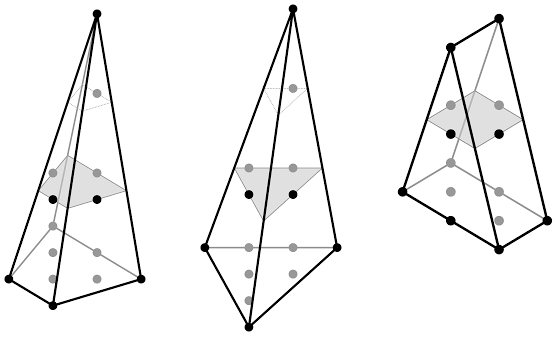Wednesday, May 22, 17:00 and 18:30, room 306
shinymath, · Categories: Без рубрики17:00 Ksenia Gadakhabadze: Ehrhart polynomials of irrational polytopes
It is classically known that, stretching a lattice polytope k times, the number of lattice points in it depends on k polynomially (the Ehrhart polynomial). Amazingly, if some vertices of a polytope are irrational, the aforementioned number of lattice points still may happen to depend polynomially on k. Polytopes of this kind are called pseudo-lattice. We shall present examples of such polytopes and the complete classification of pseudo-lattice coordinate triangles, recently obtained by Richard Stanley and coauthors.
18:30 Roman Krutovskiy, Grigory Yurgin: Сlassification of Gorenstein polytopes
The goal of our two joint talks is to obtain the classification of Gorenstein polytopes of degree two, which is equivalent to classifying all Gorenstein toric Del Pezzo varieties.
On the first half (May 15, 18:30) we introduce the notion of a Gorenstein polytope and start our classification using methods of commutative algebra. On the second half (May 22, 18:30) we finish the classification using combinatorial approach and the results of the first half.
The talks are independent form the preceding mini-talk (and do not require the knowledge of toric varieties). All necessary defenitions and facts from commutative algebra will be given during the talks.

